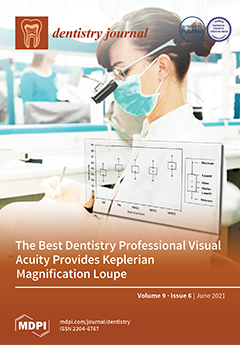Introduction:
Scardovia wiggsiae (SW) is a newly identified cariogenic pathogen associated with severe early childhood caries and oral disease. New studies have confirmed the presence of this organism among clinical samples from both pediatric and adult patients. However, the recent discovery of this organism has left researchers with only limited information available regarding the prevalence of this organism—and virtually no information regarding oral site-specific locations. Based upon this lack of information, the overall objective of this study was to perform an oral site-specific analysis of SW prevalence from clinical samples. Methods: Using an approved human subjects protocol, samples (
n = 60) from an existing saliva and site-specific biorepository were identified and screened for SW presence using quantitative polymerase chain reaction (qPCR). These data were summarized and subsequently analyzed for correlations with demographic (age, sex, race or ethnicity) or clinical (body mass index or BMI, primary/mixed/permanent dentition, orthodontic brackets) variables. Results: These data revealed that average DNA concentrations from all sample sites (saliva, dorsum of tongue, gingival crevicular fluid (GCF), biofilm of upper buccal molar, and biofilm of lower lingual incisor) ranged between 13.74 and 14.69 μg/μL, with an overall average of 14.30 μg/μL ± 1.12 (standard error or SE). qPCR screening revealed a total of
n = 34/60 or 56.7% of patient samples harboring SW. A total of
n = 71/170 specific oral sites harbored this organism, with the majority of the SW-positive participant samples harboring SW at more than one oral site,
n = 22/34 or 64.7%, including non-traditional sites such as GCF and the dorsum of the tongue. Weak correlations were found between specific SW outcomes in GCF and type of dentition (permanent; R = 0.2444), as well as SW outcomes in saliva with age (R = 0.228) and presence of orthodontic brackets (R = 0.2118). Conclusions: This study may be among the first to provide oral site-specific analysis to reveal the prevalence and location of
Scardovia among clinical patient samples. Moreover, these data also provide some of the first evidence to suggest this organism may be present not only in traditional supragingival tooth-associated biofilm sites, but also in non-traditional oral sites including the dorsum of the tongue and the gingival crevice. Based upon these results, these data may represent a significant advance in our understanding of the potential sites and locations that harbor this organism and may help contribute to our understanding of the prevalence, distribution and potential for the development of oral disease among clinic patients.
Full article






